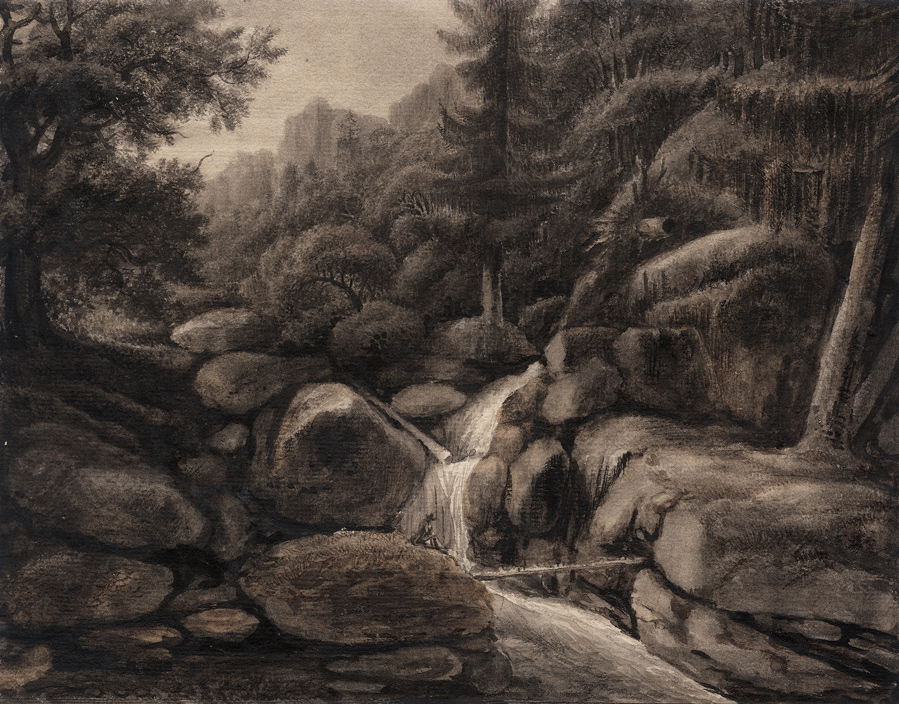Loading the page ...
Christoph Nathe
(1753 Nieder-Bielau – 1806 Schadewalde)
Forest with Rocks with a Man by a Stream in the Foreground. Point of brush and pen in brown, black, and gray ink. 21.6 x 27.7 cm. Ca. 1795.
In 1774 Christoph Nathe received his first artistic training under Adam Friedrich Oeser in Leipzig,who taught him the technique of brush drawing and etching. At the end of the 1770s Nathe returned to his native region of Lusatia, in the southeastern corner of Germany, close to the Polish border, and began an artistic exploration of his homeland. In July and August of 1782 the artist undertook the first of numerous excursions into the nearby Riesengebirge (Giant Mountains). From these trips he brought back the decisive images for the development of an independent concept of landscape. After a short trip to Switzerland and a stay in Leipzig, between 1787 and 1798 Nathe earned his living as director of the drawing school in Gãrlitz. In 1803 he moved to Lauban and three years later he died in the nearby village of Schadewalde.
Despite his rather modest biography, Nathe’s artistic legacy is quite unique and impressive. The artist never achieved proper recognition during his lifetime, probably because he lived in a small city outside the cultural mainstream. As a landscape artist Nathe left a number of drawings, watercolors, and etchings that show a remarkably individual and sensitive interpretation of nature, especially in the later works.
The present, wonderfully evocative sheet belongs to Nathe’s mature period and was most likely executed during an excursion to the Fichtel Gebirge. The lower half of the composition is comprised of massive rocks, with a seated man in the foreground › the artist himself ? › who seems to be drawing. His silhouette contrasts strongly with the white bubbling water of the wild stream. The huge tree trunks of the forest reach the upper border of the composition, forming an impressive ground before which the lonesome wanderer appears even smaller and more disoriented. The distinctive silhouette of a mountain range and the cloudy sky can, however, be seen through an opening in the dense foliage.
In comparison to Nathe’s drawing style of the 1780s, that in its minute detailing is reminiscent of the works of such contemporaries as Franz Innocenz Kobell and Johann Christian Klengel, here the artist’s differentiated treatment of the various elements of the image create a highly poetic atmosphere. The theme of the work is the nothingness of mankind against the sublime magnificence of nature. The fluid, smooth application of wash in the foreground is enriched by delicate pen hatching that creates a sense of three-dimensionality in the rock formations. The ingenuity with which Nathe uses his brush evokes the subtle tones in the vegetation. The heaviness of the hanging foliage of the big larch tree on the right has been described here with virtuoso short vertical brush strokes and diagonal pen hatching. Genrelike motifs have been avoided in favor of a sensitive interpretation of nature, that anticipates the poetic and enigmatic landscapes of Caspar David Friedrich.
From the collection Strähnz, Leipzig (not recorded by Lugt); a German private collection.
